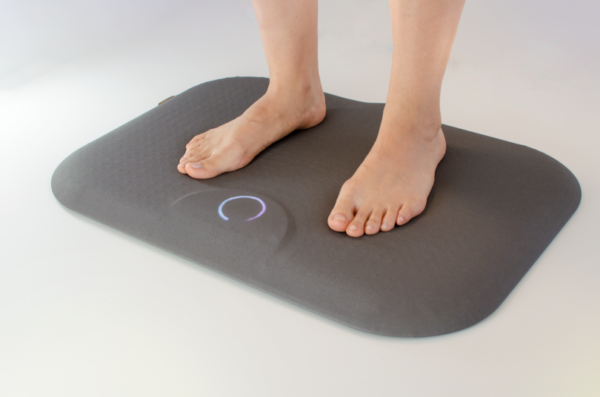Keeping Foot Ulcers out of your Future
Amputations are terrifying and they begin with foot ulcers which can often be prevented, even for high-risk patients


We spoke with Jon Bloom, MD, CEO and Co-Founder of Podimetrics — https://www.podimetrics.com/ — about lower extremity complications that plague many people with diabetes and commonly result in foot ulcers and can lead to amputations.
A Big but Hidden Problem
Foot ulcers are the most common lower extremity complication.
Foot ulcers directly impact a person’s mobility and the quality of their life. You don’t want to be housebound because you can’t walk.
In total, one million foot ulcers are diagnosed annually in the US. Of these, about 60% are people who are getting a foot ulcer for the first time, while 40% are situations where the person is experiencing a 2nd or 3rd foot ulcer.
Among people covered by Medicare, 6% will experience a foot ulcer in any year. This sounds manageable but fully one-third of diabetes expenditures — or about $82 billion per year — are for lower extremity complications. A single amputation can cost $100,000.
Causes of Foot Ulcers
Everyone says that Type 2 Diabetes is a progressive disease. This is well demonstrated by foot ulcers which tend to occur in older people who have had diabetes for years.
Standard complications of diabetes include:
- Neuropathy reduces your sense of pain. Pain is often an early warning system and without the ‘gift of pain’ we don’t realize that we are damaging our feet
- Declining blood flow from lower circulation reduces the vitality of our tissues and slows healing
- High blood glucose increases inflammation and increases the severity of infections
The ‘drivers of damage’ are generally from repetitive micro-trauma.
- Pressure injury from walking around and supporting the extra weight of obesity
- Friction injury from shoes that are too tight or don’t fit well
- Shear stress from poorly fitted shoes or altered biomechanics
Summer is Not Foot Friendly
People love to go barefoot in hot weather and sandals are considered dressing up. Unfortunately for people with advanced diabetes, your feet are vulnerable without shoes and you may injure your foot without feeling pain.
So don’t take the summer off when caring for your feet.
Podimetrics Service
Podimetrics provides patient a foot temperature measurement mat that gives early warning on likely foot ulcers.

Patients stand on their in-home mat for 20 seconds a day and a heat map of their feet is transmitted to Podimetrics. The company’s care team monitors the temperature and trends of each person’s foot and triage any problems found. Podimetrics then calls the patient to discuss how to keep the foot ulcer from developing.
A typical recommendation is to walk less for a short while.
On average, each Podimetrics monitored patient gets 1.5 alerts/calls per year. Podimetrics can detect 97% of ulcers five weeks before the ulcer would otherwise appear clinically. Walking less and other in-home changes help prevent a foot ulcer and any clinical visit in 68% of cases. In the 32% of cases where a clinical visit is recommended, 76% of patients are treated by debriding callus buildup on their feet. Data is being collected on the reduction in hospital admissions and amputations.
VA Focus
Podimetrics began by focusing on Veteran’s Administration Medical Facilities and CBOCs (Community Based Outreach Clinics). Today they serve more than one dozen VA Medical Facilities. Podimetrics is rapidly adding other VA facilities to their coverage areas.
Veterans have a major problem with diabetes — 24% of all people served by the VA have diabetes. This includes veterans and active-duty service members of all ages being cared for by the Veteran Health Administration.
The VA has an active program to prevent amputations among their patient with diabetes because 80% of all non-traumatic amputations among VA patients come from lower extremity complications, often starting with foot ulcers. This program is called PAVE and stands for Prevention of Amputations in Veterans Everywhere.
Podimetrics focuses on the high-risk population among veterans who have diabetes. High risk in the PAVE program is defined as someone who has already had a foot ulcer or partial amputation or has some foot deformity plus neuropathy.
Getting Started
Once a high-risk patient is identified during a clinical visit, the Podimetrics mat is ordered by the clinician and Podimetrics delivers its SmartMat and simple instructions. The mat looks simple yet it is cellularly connected to transmit each day’s temperature measurements. It is battery powered and needs to be recharged monthly.
The goal is for each person to use the mat as a daily habit. This provides Podimetrics with good baseline data and enables early warning of possible emerging ulcers.
Steps you can take
Are you at risk — https://www.apma.org/diabeticwoundcare
Self-examination test —https://www.joslin.org/info/check_your_feet_every_day.html
Questions to ask your healthcare provider
- What are the risk factors for developing a DFU?
- What is the first warning sign of a DFU?
- How can I prevent getting a DFU?
- What happens when a DFU goes untreated?





